By: Rennie Svirnovskiy
I spent the majority of our first day in Kyoto in Osaka– which is not Kyoto, but a set of 25-minute and 10-minute rides from Kyoto by Japan Rail. A few of us set out early after dropping our luggage off at the spacious Ibis Hotel, navigating our way to a lunch of cold udon noodles at Kyoto Station (one of the largest buildings in Japan) and then to the aquarium of classmate Taylor Shigezawa’s dreams: Kaiyu-kan, known both for its housing of the whale shark and for its enormous size.
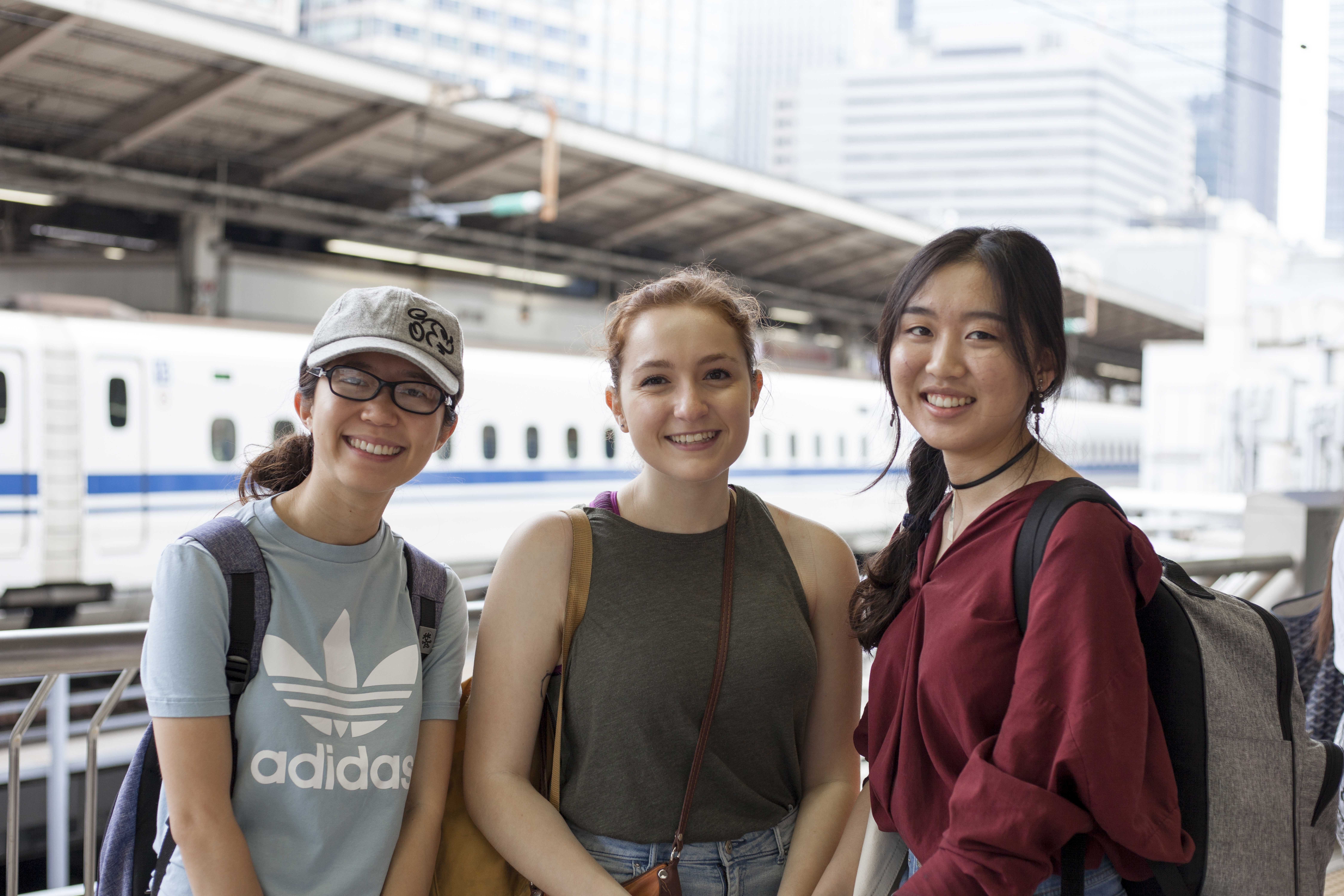
Julie Ho, me and Yuni Ye waiting for the JR.
The outside is a view all in itself, in part because of the proximity of a Legoland store (which meant we got to bask in the light of a life-sized Lego giraffe) to the aquarium. Waiting in line for tickets, we watched marine-life-shaped kites and streamers flail overhead, catch the air and the sunlight just right to fill out and wink at Taylor, whose joy over where we were overwhelmed and infected even the most skeptical (me).
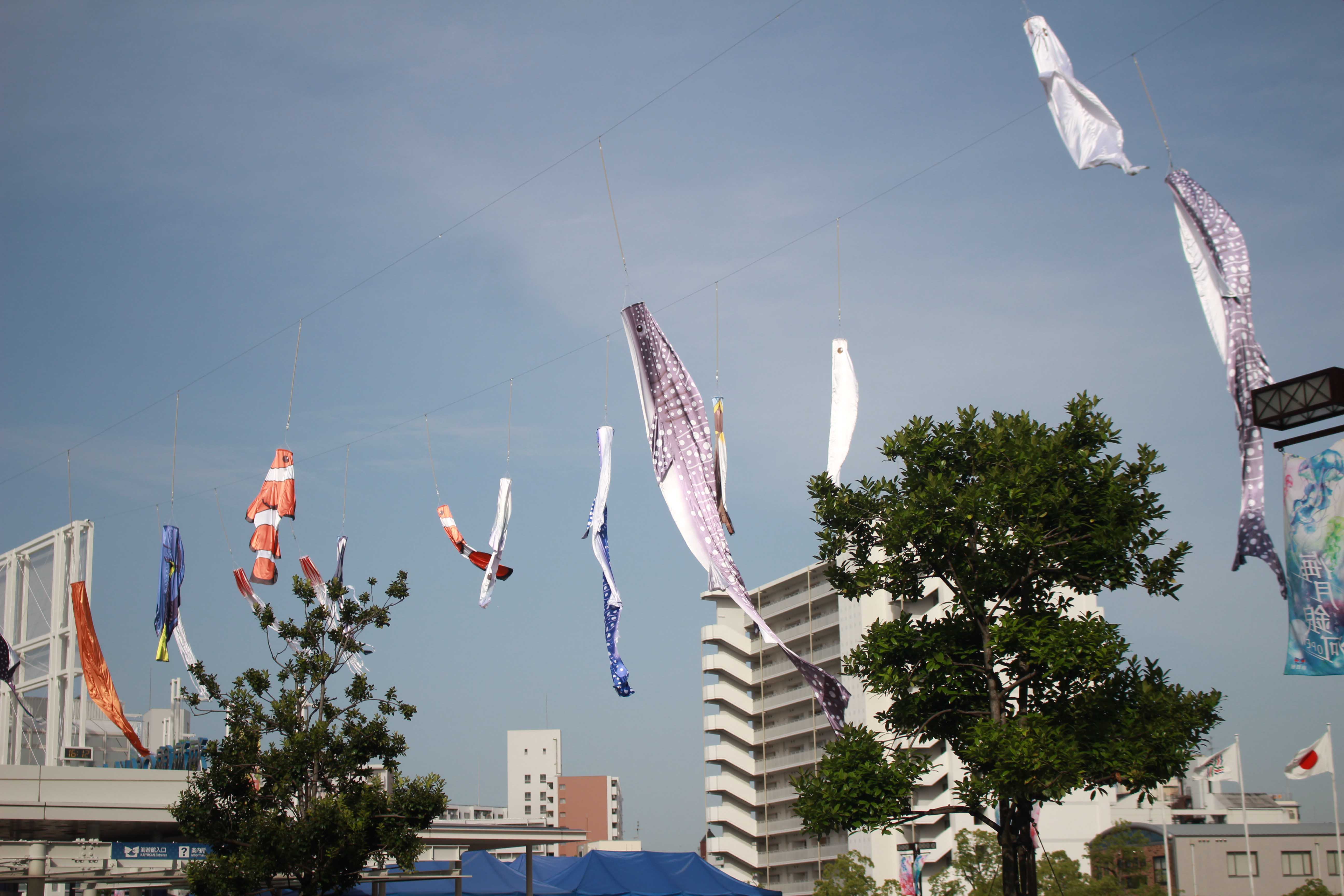
The flailing marine creatures outside of the aquarium.
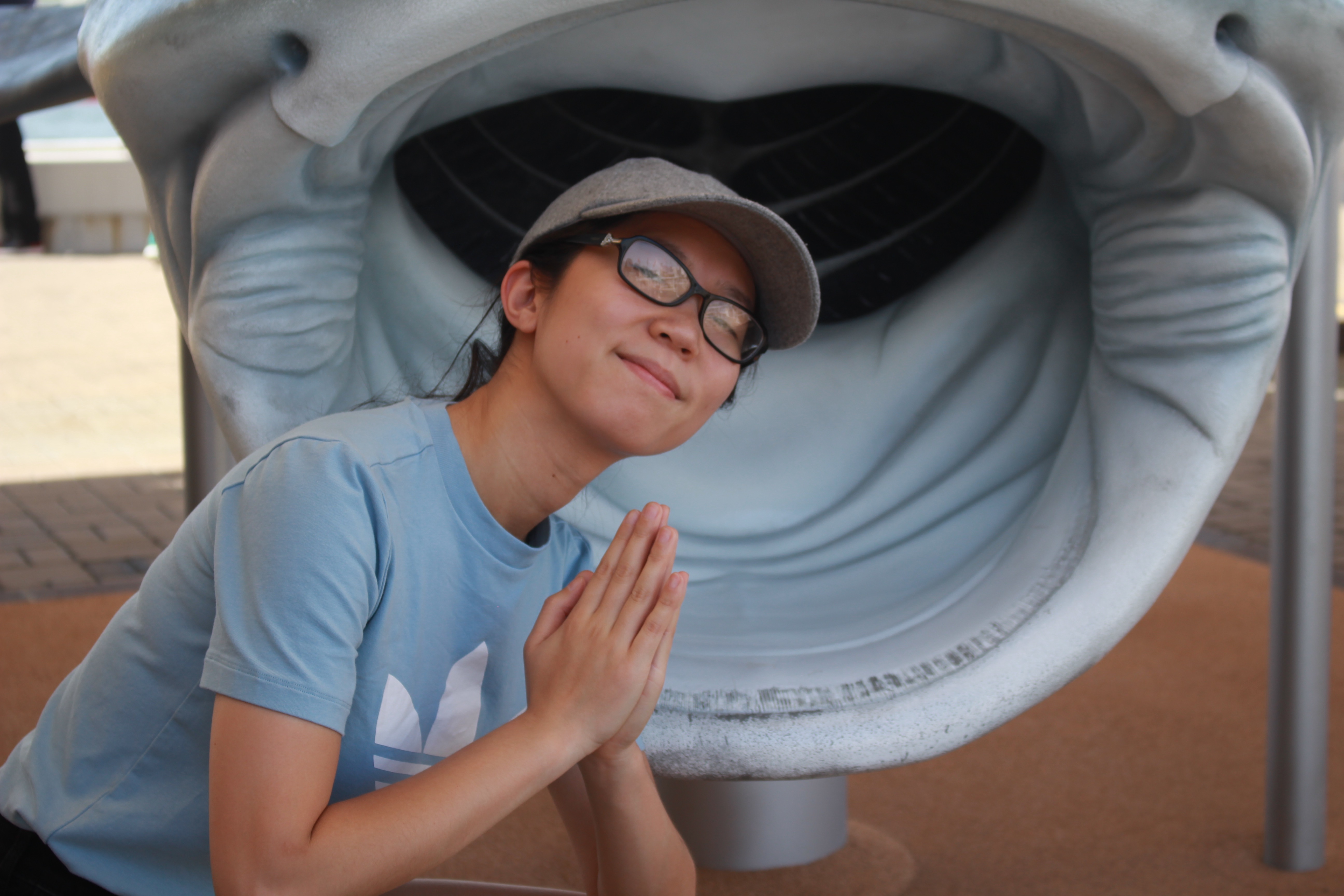
Julie Ho posing in the mouth of a whale shark (not the real whale shark, that’s dangerous).
The aquarium sits in the Tempozan Harbor Village of Osaka’s bay area and exhibits aquatic life over 15 tanks that each represent a specific region of the Pacific Rim. The central tank – where the whale shark lives – is nine meters deep. We had the pleasure of seeing it feed. Unlike the idle vacuum cleaner at my apartment, the whale shark sucks water into its mouth, allowing it to pull in more plankton than other filter feeders and to sustain its size. The other marine life in the tank can’t compete, and thankfully, it doesn’t have to.
Other fun tank facts: The aquarium is built such that you start the tour up on the eighth floor above any water (with the sea otters) and eddy down floor by floor around the central tank to observe the marine life at different depths.
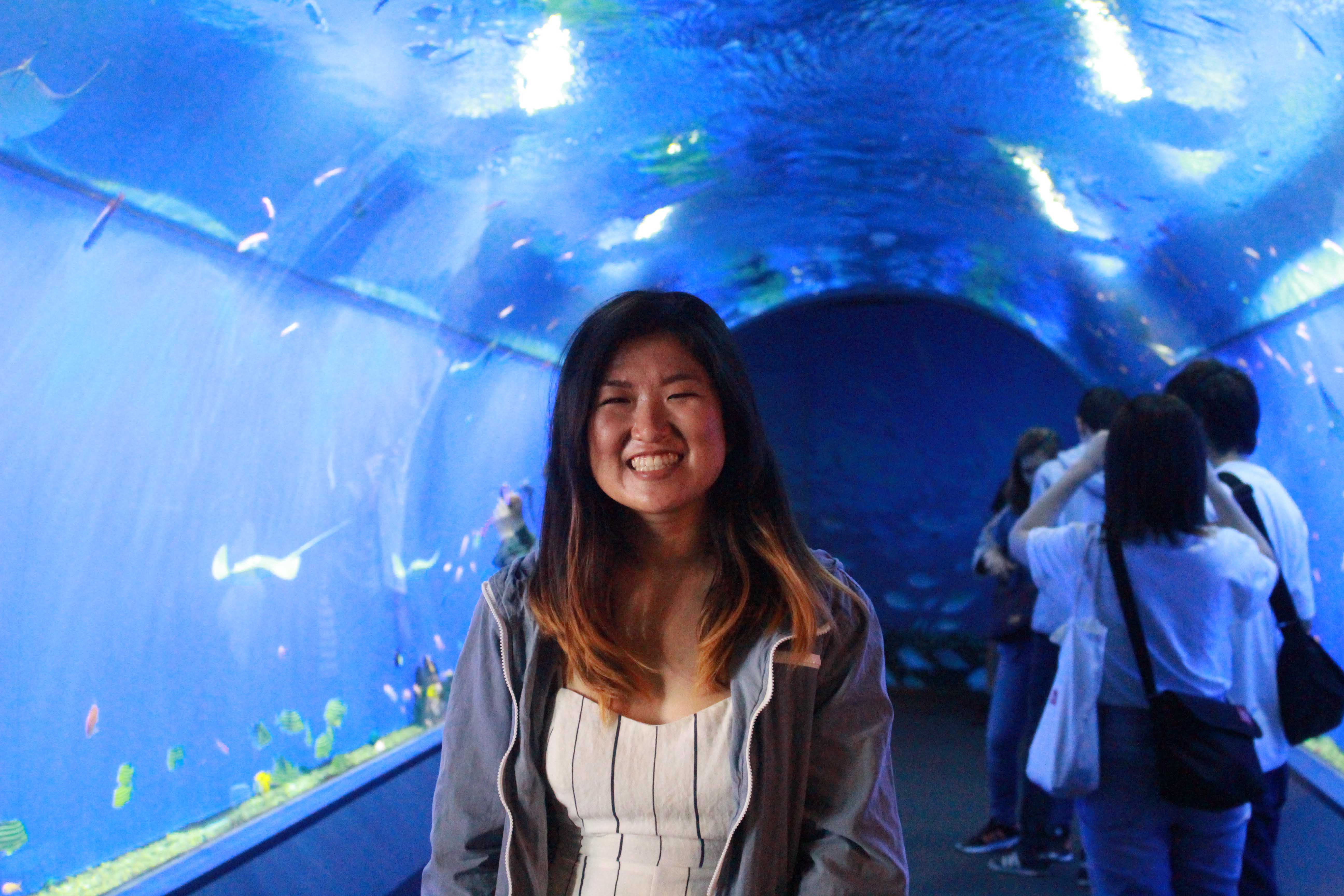
Taylor Shigezawa surrounded by fish.
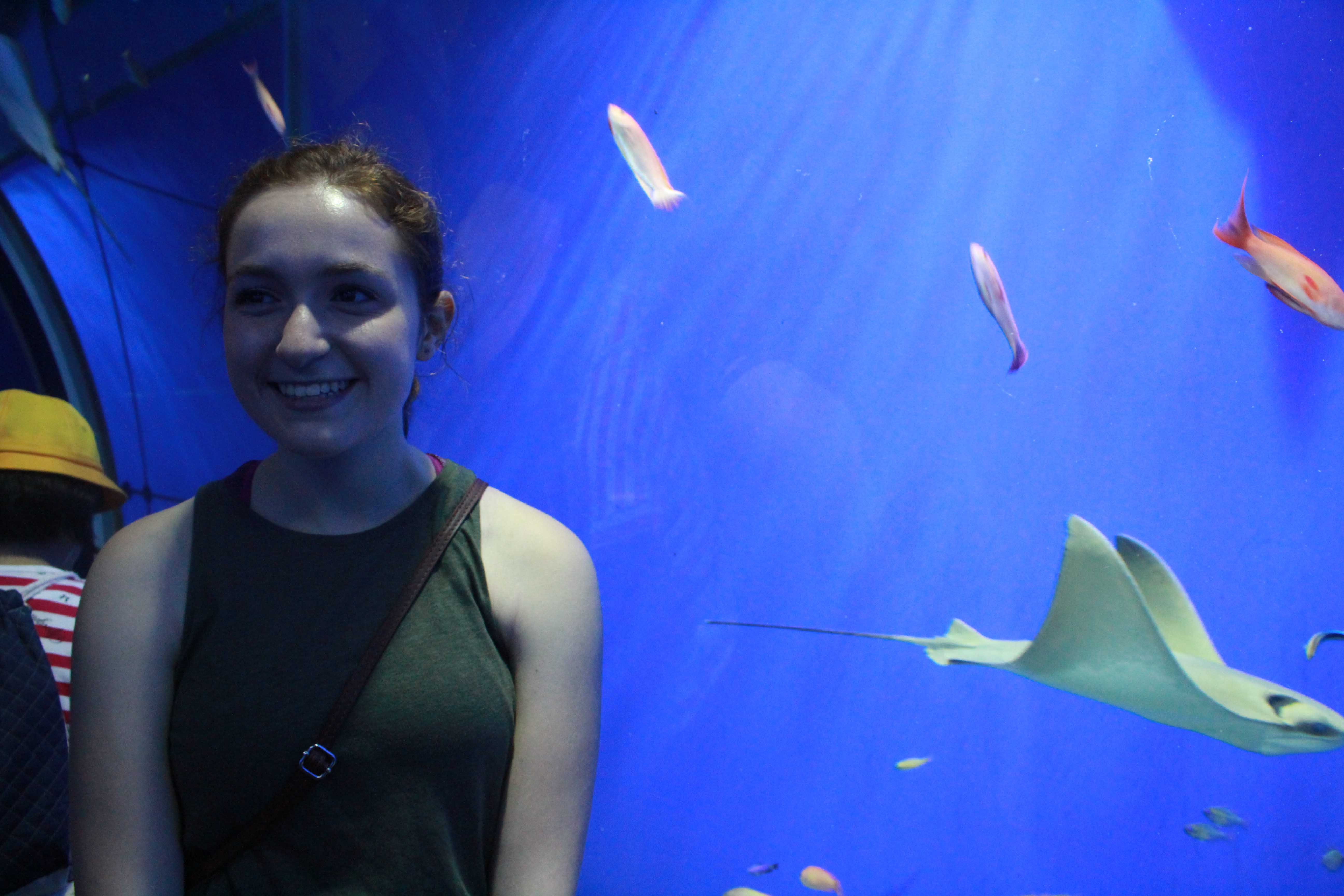
Me surrounded by fish.
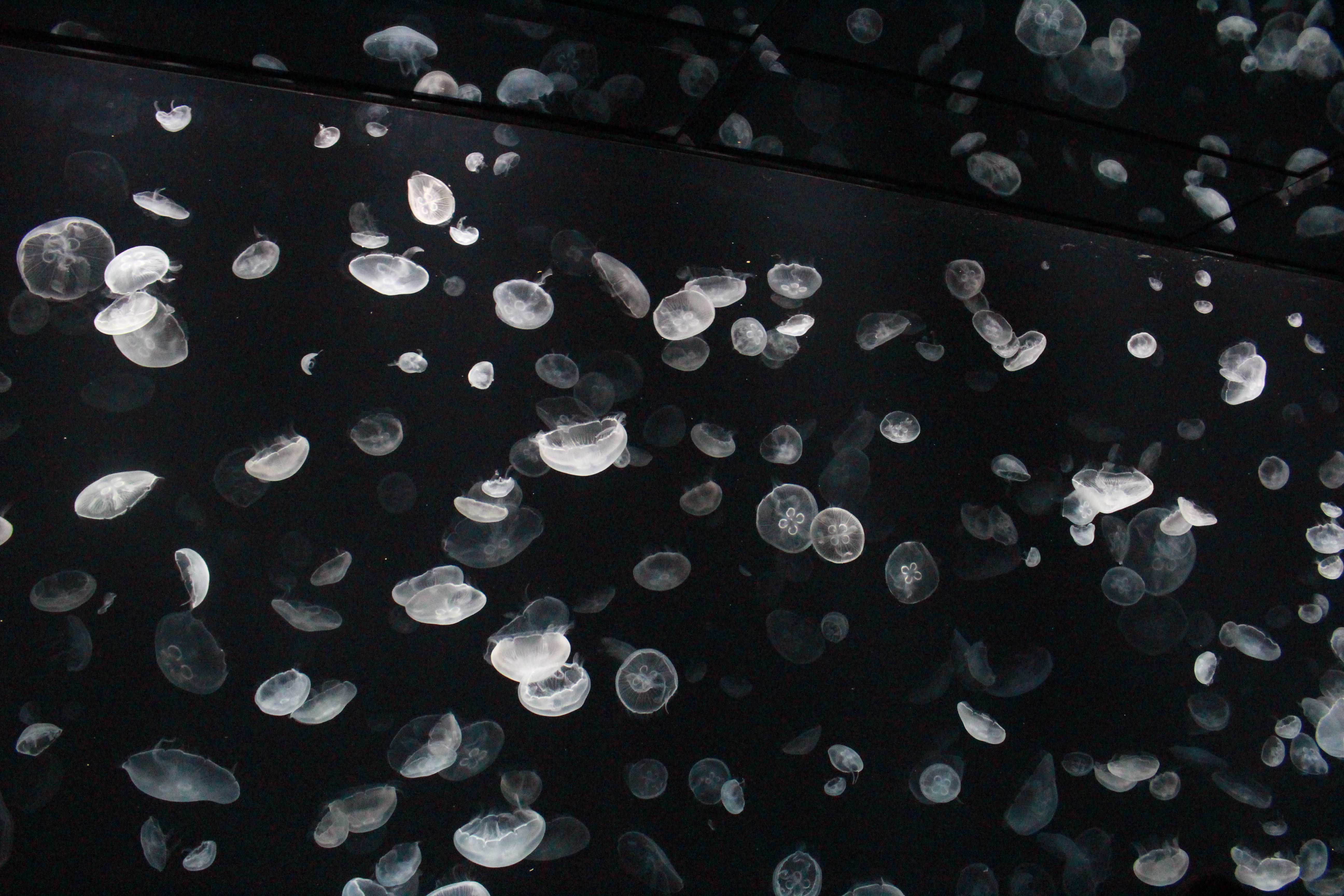
The jellyfish tank!
Other fun Osaka facts: Osaka is the second largest city in Japan, served as the center for Japan’s rice trade during the Edo period, and despite its name (“big hill”), has no big hills– just mountains surrounding three sides of the prefecture. It’s not as colorful or as flashy as Tokyo or Kyoto, mostly built of concrete and packed very tightly, but it’s laid back and down-to-earth.
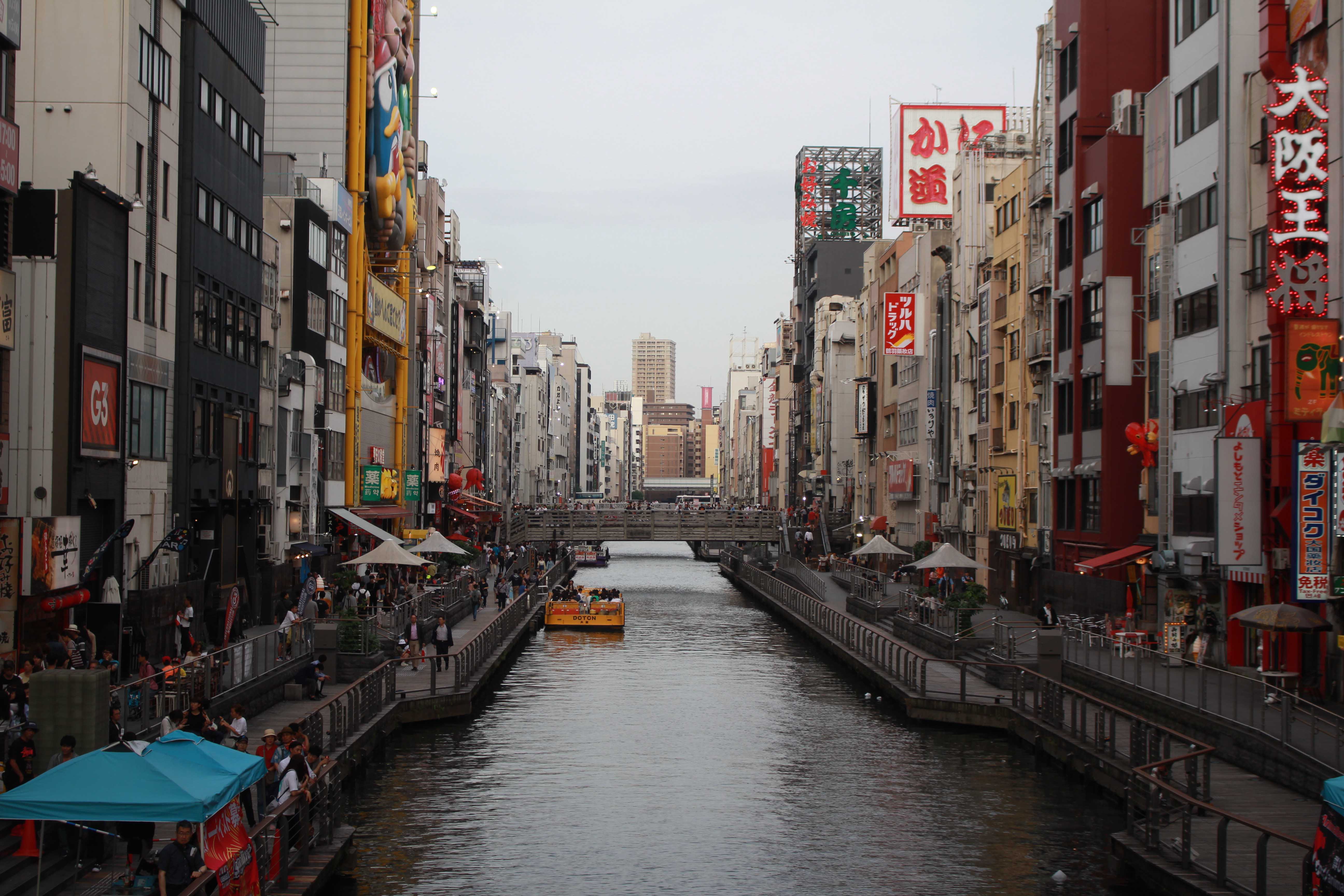
View from a bridge in Dotonbori.
After a series of metro mistakes, we reached Dotonbori, a neighborhood illuminated by neon signs and arguably best known for the Glico billboard of a boy crossing a finishing line. I argue this because it’s what signaled to classmate Hannah Kreiswirth that we’d made it to Dotonbori. Every few steps, the neon carnival of it all was disrupted by a narrow stone alleyway with smells like you wouldn’t believe. We shopped for a while in Shinsaibashi-suji, one of Osaka’s busiest neighborhoods, and once our feet felt at risk of splitting open, sat down to wait outside of an okonomiyaki restaurant.
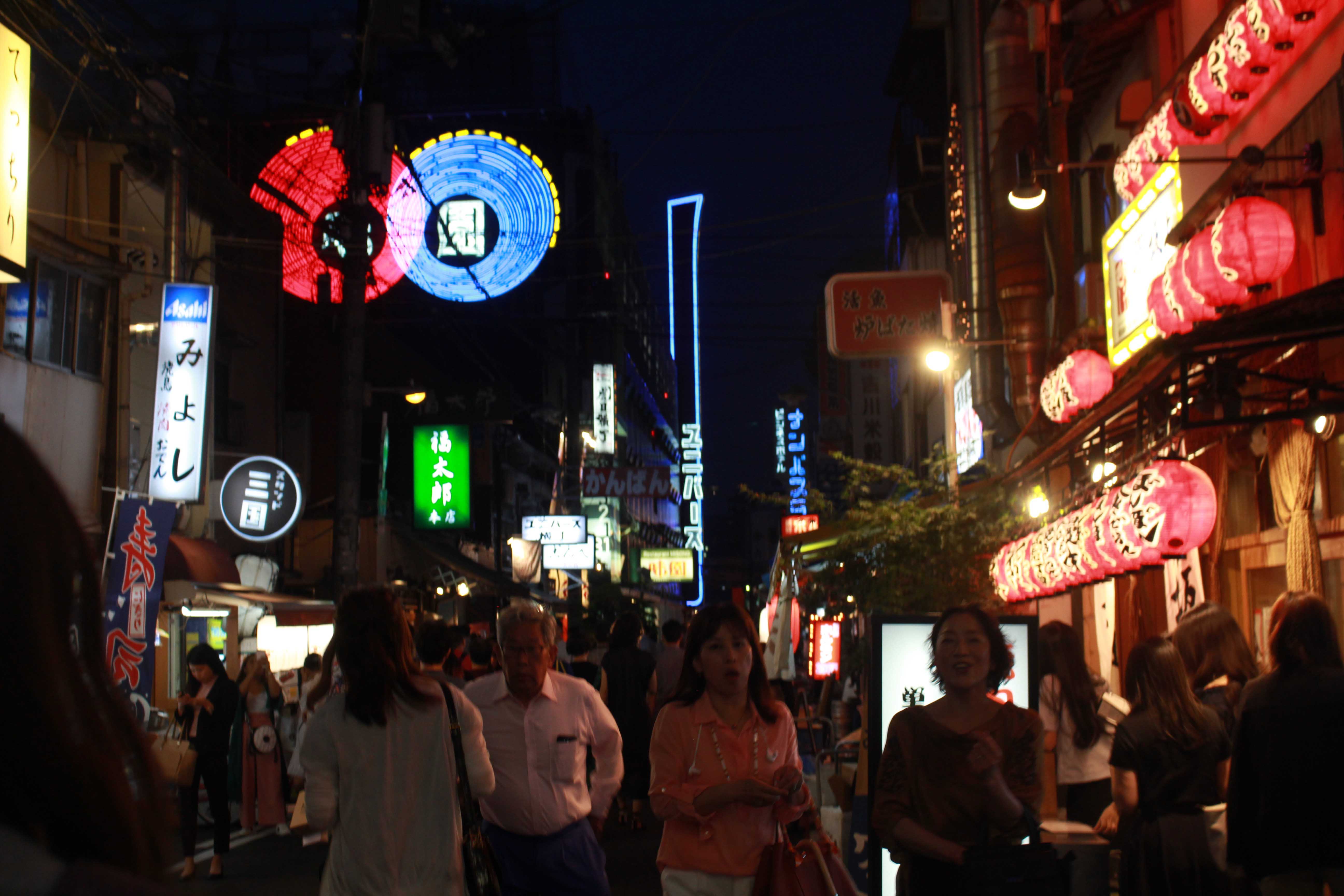
A side street in Osaka.
Okonomiyaki is a chunky, savory pancake made with flour, dashi, egg, onions, cabbage and some kind of meat or seafood. It’s not photogenic, but especially after a 19,000 steps, it hits the spot. We ate squid and pork okonomiyaki off the grill in front of us, almost foregoing plates and chopsticks and eating off of our spatulas.
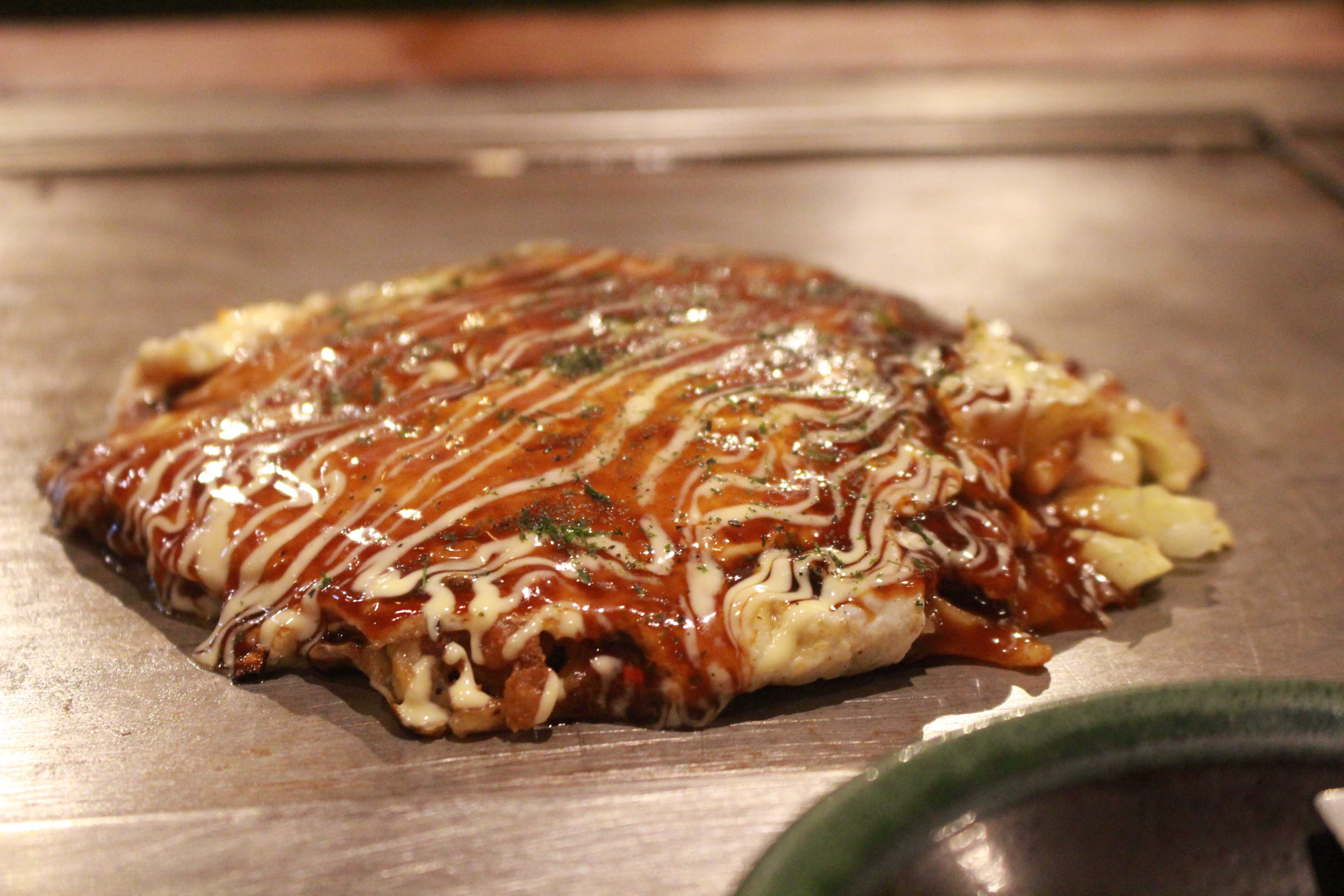
Someone might have teared up eating this?
Our next stop was a takoyaki stand down the street, where we split a plate of octopus balls (made with batter, minced octopus, tempura scraps, pickled ginger and green onion) and figured out a late route back to the Ibis Hotel in Kyoto.
